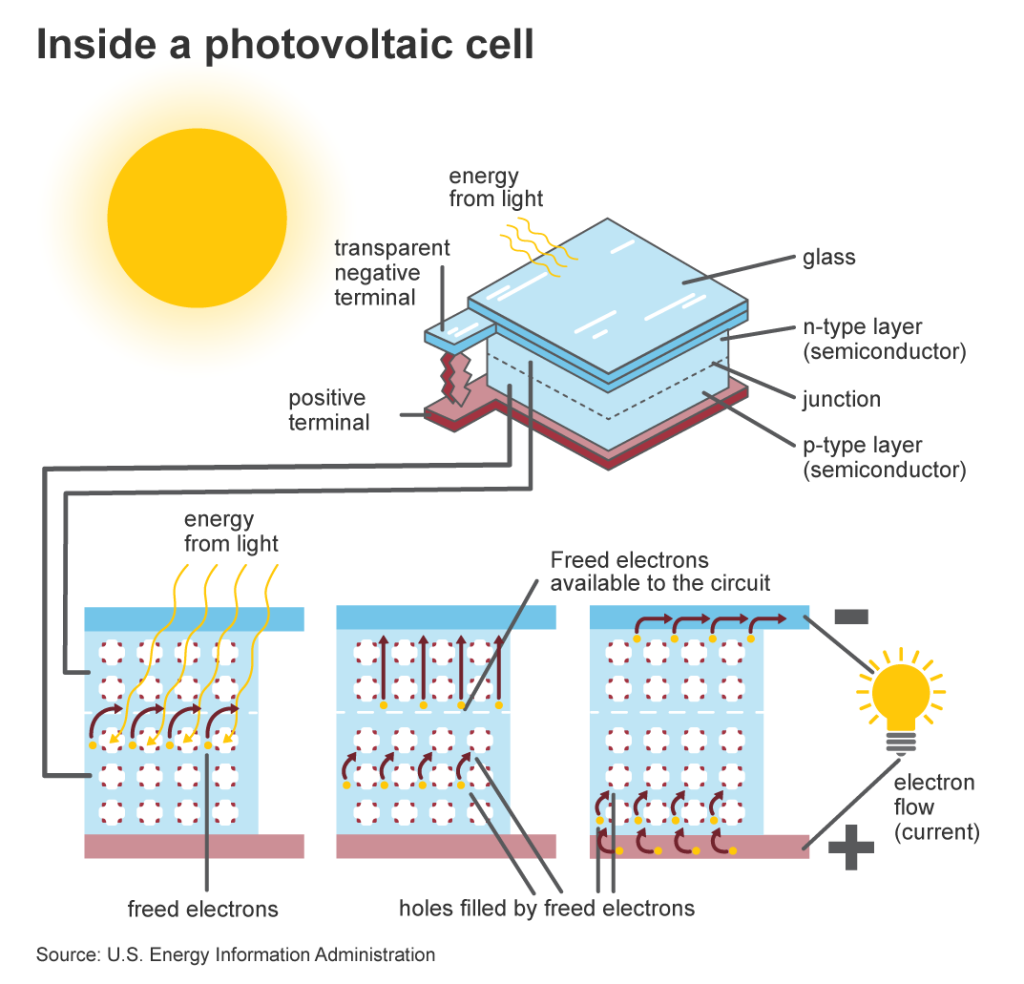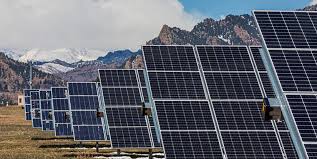The Significance of Photovoltaics Goes Far Beyond Energy Conservation and Emission Reduction
Addressing climate change is about the future of all human development.
Energy Determines Civilization’s Heights
1. The height of human civilization is determined by the total amount of energy obtained from the external environment. How much energy we can acquire determines how advanced we can become.
2. In an isolated system, entropy increase is irreversible. The only way to reverse entropy increase is to acquire energy from outside the system.
3. A tribe, a country, a civilization, or even the entire Earth can be viewed as an independent system. Its development level depends on how much energy this system can obtain from the outside. Without acquiring necessary energy, the normal operation of social organization cannot be maintained, and organized human society would collapse. If sufficient energy can be obtained from the outside, entropy increase can be reversed, allowing development to higher levels.
4. The total amount of energy humans can acquire depends on how they acquire it. Using fossil energy allows us to obtain a hundred times more energy than using biomass energy (plants and animals) – until Earth’s accumulated assets are depleted. Both nomadic and agricultural societies merely use different models under the same approach, limited by natural conditions, of plants converting solar energy.

Energy Utilization in Human History
5. Human ancestors (hominids) acquired energy from the external environment no differently than other animals – through direct consumption. Fire changed how humans utilized biomass energy (thermal energy), turning unusable branches into firewood and increasing the total amount of external energy humans could acquire by an order of magnitude. The transition from raw to cooked food was a breakthrough in how humans utilized biomass energy, resulting in apes evolving into humans.
6. Due to comprehensive leadership in biomass energy utilization technology (hydraulics, ridge farming, composting, seed selection, agricultural tools, smelting, etc.) while simultaneously evolving to the highest level of social organization and mobilization capacity, China achieved a net yield of 250 jin per mu of land 2,000 years ago during the Qin and Han dynasties. Europe, even 400 years ago in the 17th century before the Industrial Revolution, produced less than 80 jin. When England converted farmland to pastures (“sheep eating people”), Kublai Khan was “converting pastures back to farmland” due to England’s low agricultural efficiency.
7. Regardless of how advanced the technology level in agricultural societies, they still didn’t change the way of acquiring energy from the outside (biomass energy plus small amounts of wind and water energy), which determined the total energy that could be acquired from fixed land, and also determined the ceiling of agricultural civilization development. When the total energy acquired from outside is insufficient to offset entropy increase, it inevitably becomes impossible to maintain society’s organization. This is the dynastic cycle law of utilizing biomass energy.

China’s Historical Energy Advantage
8. Chinese civilization significantly outpaced other civilizations by not only fully developing all possible skills in biomass energy utilization to their peak but also developing social structures for mobilizing and organizing human power to their peak, thus qualifying to encounter the ceiling of the dynastic cycle. This cycle occurs because the total amount and efficiency of energy that can be acquired from a fixed area of land decreases marginally as population increases, or because climate change or external enemy invasion reduces the total amount of energy acquired, resulting in per capita external energy acquisition being insufficient to offset entropy increase, leading to the inability to maintain social organization operation, and thus social organization collapses.
This ceiling is only related to the total acquirable energy determined by the energy utilization method, not to social systems and organizational structures. Whether slave, feudal, or capitalist societies, or nomadic, agricultural, commercial, industrial, or information models, as long as the energy utilization method remains unchanged, the ceiling for total energy acquired from the outside will not change, and there will inevitably be times when the cycle is triggered. Different social organizational structures can only affect when this ceiling is reached, not the height of the ceiling.
9. The other civilizations of the world had not fully developed all biomass energy utilization skills to their peak, nor had their social organizational structures evolved to advanced stages, so they had no opportunity to experience the dynastic cycle. Civilizations that had not fully utilized natural resources (production technology utilizing natural resources) or human potential (social structures mobilizing and organizing human power) were not qualified to trigger the cycle law. China, representing the most advanced technological level and most effective social structure primarily utilizing biomass energy as the main energy acquisition method, exclusively enjoyed the privilege of triggering the cycle law multiple times.
The Industrial Revolution: A Fundamental Energy Shift
10. Around 1550, coal’s share in England’s energy consumption exceeded 5%, and by around 1619, coal had surpassed firewood to become the main energy source. England’s leading the Industrial Revolution was directly related to the change in energy utilization method that greatly increased the total amount of energy acquired. What truly changed human society was the way of acquiring energy from the outside, namely replacing biomass energy with fossil energy as the main source, which is the fundamental reason for the explosive development after the Industrial Revolution.
11. The 1972 Club of Rome report “Limits to Growth” was a discussion about the ceiling of fossil energy-based development and a concern about the global dynastic cycle law. For humanity to move to a higher dimension, it must acquire energy in orders of magnitude 10 times greater. The inevitable depletion of fossil energy will reduce the energy acquired from outside, making it unable to offset entropy increase, causing human society to gradually disintegrate into “wasteland,” where new social forms adapted to the total acquirable energy would re-form. This is the dynastic cycle law of utilizing fossil energy.
The Limitations of Fossil Fuels
12. Fossil energy cannot possibly elevate all of humanity to a higher level, but it can maintain an aristocratic lifestyle for a small portion of people for quite some time, provided most people’s civilization level remains limited. This is the fundamental reason behind Obama’s statement that “if Chinese people live like us, we’ll have to eat grass.”
13. Western civilizations that only think about their own escape by boat when facing floods cannot possibly bear the responsibility of exploring future paths for humanity. Only Chinese civilization, with its tradition of Yu controlling floods and the foolish old man moving mountains, has the possibility of “gathering stones to mend the sky” (finding solutions to seemingly impossible problems).
14. Nuclear fusion’s “50 years in the future” seems to reset its countdown every day. Wind, solar, and hydro are currently the visible possibilities.
The Potential of Renewable Energy
15. In 2023, global primary energy (including firewood) total consumption converted to 21.1 billion tons of standard coal, with fossil fuels accounting for 81% and renewable energy 14.6%.
16. Global hydropower resources technically developable are 1.6 billion kilowatts, with 1.2 billion kilowatts already developed. China can develop 542 million kilowatts, with 427 million kilowatts already installed. Conclusion: There isn’t much development space left.
17. Global technically developable wind energy is 130 billion kilowatts, with 1.02 billion kilowatts already installed. China’s developable wind energy is about 15.6 billion kilowatts, with 467 million kilowatts already installed. Conclusion: There is considerable development space but still insufficient.
18. The annual solar energy reaching Earth’s surface is equivalent to approximately 130 trillion tons of standard coal (global consumption in 2023 was 21.1 billion tons), with about 2.65 trillion kilowatts suitable for concentrated development (160 million kilowatts already installed, with China installing 610 million kilowatts). Field crops’ solar energy utilization rate is 1-2%, grasslands 0.1%, while photovoltaic cells’ solar energy utilization rate is 15-25%, and the usable area is dozens of times larger than arable land. Conclusion: Solar energy is currently the only way for humans on Earth to acquire tens of times more energy.
The Future Path for Global Development
19. The Global South can no longer raise its overall development level by using fossil energy, and Obama’s words were directed at the entire Global South. If the Global South could increase acquired energy tenfold, it could significantly raise development levels, greatly expand the world market, and improve the development level of the entire human society.
20. When unable to rely on fossil fuels for energy increases on the order of tenfold, solar energy becomes Earth’s only feasible future, and especially the only sustainable development path for the Global South.
21. The root of conflicts between countries is the struggle for the right to use and control limited resources. If the total amount of energy available to humanity increased 10-fold, it would to some extent reduce the intensity of resource competition.
China’s Contribution to Global Photovoltaics
22. The solar photovoltaic industry is, in fact, China subsidizing the world’s future. Without Chinese companies reducing photovoltaic costs to 1/10 in 10 years, there would be no affordable large-scale application of photovoltaics globally. China’s advanced, inexpensive photovoltaic capacity has become a welfare benefiting the world, including Western developed countries and especially developing countries in the Global South.
23. No matter how one evaluates China’s photovoltaic contribution to humanity, it is not an exaggeration. It is as great as England’s using coal to power steam engines.
24. Human society’s development and progress positively correlate with external energy acquisition, with leapfrog development synchronized with leapfrog increases in energy acquisition.
Note: Data is from the internet, with simple screening and cross-checking. There are certainly errors, but they should not be too significant.